Lesson on the study of traffic rules “Duties of drivers, pedestrians, passengers. Municipal educational institution. % of accidents happen to buses
DEPARTMENT OF EDUCATION OF THE KAGALNITSKY DISTRICT
MUNICIPAL EDUCATIONAL INSTITUTION
KAGALNITSKY SECONDARY EDUCATIONAL SCHOOL №1
(MOU Kagalnitskaya secondary school No. 1)
Regional lesson on the study of traffic rules
"Duties of drivers, pedestrians, passengers"
Developed by:
class teacher 10b class
MOU Kagalnitskaya secondary school №1
Elizbaryan Reveka Grigorievna
Art. Kagalnitskaya

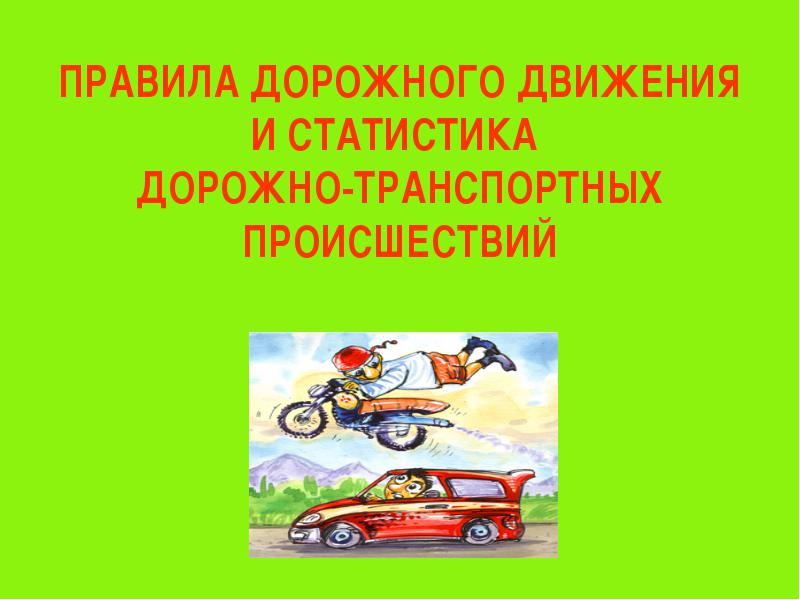
Tasks:
Tasks:
Repeat the rules for the movement of pedestrians along the street and the road.
To develop in children the ability to find the safest way from home to school.
Foster respect for all road users.

P. 4. Obligations of pedestrians
P. 4. Obligations of pedestrians
(As amended by Decree of the Government of the Russian Federation of September 25, 2003 N 595)
4.1. Pedestrians must move along sidewalks or footpaths, and in their absence, along roadsides. Pedestrians carrying or carrying bulky items, as well as persons moving in unpowered wheelchairs, may move along the edge of the carriageway if their movement along sidewalks or shoulders interferes with other pedestrians.
In the absence of sidewalks, footpaths or roadsides, as well as in case of impossibility to move along them, pedestrians can move along the cycle path or walk in one line along the edge of the carriageway (on roads with a dividing strip - along the outer edge of the carriageway).
When driving along the edge of the carriageway, pedestrians must walk towards the movement of vehicles. Persons moving in wheelchairs without an engine, driving a motorcycle, moped, bicycle, in these cases must follow the direction of the vehicles.
(as amended by Decree of the Government of the Russian Federation of December 14, 2005 N 767)
When driving along roadsides or the edge of the carriageway at night or in conditions of insufficient visibility, pedestrians are advised to carry objects with retroreflective elements and ensure the visibility of these objects by vehicle drivers.
(the paragraph was introduced by Decree of the Government of the Russian Federation of December 14, 2005 N 767)
Groups of children are allowed to drive only on sidewalks and footpaths, and in their absence - on roadsides, but only during daylight hours and only when accompanied by adults.
4.2. The movement of organized pedestrian columns on the carriageway is allowed only in the direction of movement Vehicle on the right side no more than four people in a row. In front and behind the column on the left side there should be escorts with red flags, and in the dark and in conditions of insufficient visibility - with lights on: in front - white color, behind - red.
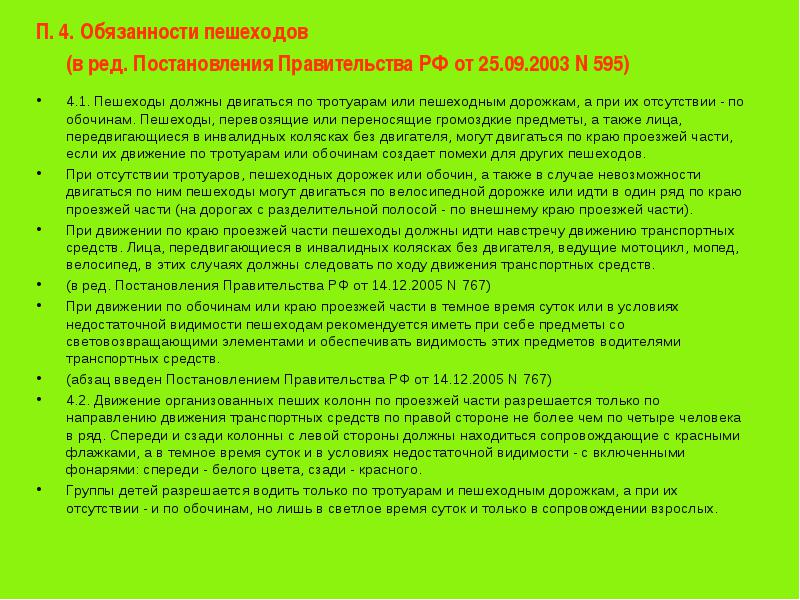
4.3. Pedestrians must cross the carriageway at pedestrian crossings, including underground and elevated ones, and in their absence - at intersections along the line of sidewalks or roadsides.
If there is no crossing or intersection in the visibility zone, it is allowed to cross the road at a right angle to the edge of the carriageway in areas without a dividing strip and fences where it is clearly visible in both directions.
4.4. In places where traffic is regulated, pedestrians must be guided by the signals of the traffic controller or a pedestrian traffic light, and in its absence, a transport traffic light.
4.7. When approaching vehicles with a blue flashing beacon and a special sound signal turned on, pedestrians must refrain from crossing the carriageway, and those on it must give way to these vehicles and immediately clear the carriageway.
When moving across the carriageway to the stopping place of the route vehicle or from it, pedestrians must be guided by the requirements of paragraphs 4.4 - 4.7 of the Rules.
4.5. At unregulated pedestrian crossings, pedestrians can enter the carriageway after they estimate the distance to approaching vehicles, their speed and make sure that the crossing will be safe for them. When crossing the carriageway outside the pedestrian crossing, pedestrians, in addition, should not interfere with the movement of vehicles and exit from behind a standing vehicle or other obstacle that limits visibility without making sure that there are no approaching vehicles.
4.6. Having entered the carriageway, pedestrians should not linger or stop if this is not related to ensuring traffic safety. Pedestrians who did not have time to complete the transition must stop on the line separating the traffic flows of opposite directions. You can continue the transition only after making sure that the further movement is safe and taking into account the traffic light signal (traffic controller).
4.8. It is allowed to wait for a shuttle vehicle and a taxi only on elevated carriageway landing sites, and in their absence - on the sidewalk or roadside. In places of stops of route vehicles that are not equipped with elevated landing areas, it is allowed to enter the carriageway to board the vehicle only after it has stopped. After disembarking, it is necessary, without delay, to clear the roadway.

The driver of the vehicle must
2.3.1. Before leaving, check and ensure the correct technical condition of the vehicle on the way in accordance with the Basic Provisions for the admission of vehicles to operation and the duties of officials to ensure road safety
In the event of a traffic accident, the driver involved in it must:
immediately stop (do not move) the vehicle, turn on the emergency light alarm and set the emergency stop sign in accordance with the requirements of clause 7.2 of the Rules, do not move objects related to the incident;
(as amended by Decree of the Government of the Russian Federation of 24.01.2001 N 67)
report the incident to the police, write down the names and addresses of eyewitnesses and wait for the arrival of police officers.
2.1.2. When driving a vehicle equipped with seat belts, be fastened and not carry passengers who are not wearing seat belts (it is allowed not to fasten seat belts for teaching driving when the vehicle is driven by a student, and in settlements, in addition, drivers and passengers of vehicles of operational services with special color schemes applied to the outer surfaces). When driving a motorcycle, wear a fastened motorcycle helmet and do not carry passengers without a buttoned motorcycle helmet.
to accept possible measures to provide first aid to the victims, call an ambulance, and in emergency cases, send the victims on a passing, and if this is not possible, deliver them in your vehicle to the nearest medical institution, provide your last name, registration plate of the vehicle (with presentation of a document identity card, or driving license and registration document for the vehicle) and return to the scene of the accident;
clear the roadway if the movement of other vehicles is impossible. If it is necessary to free the roadway or deliver the injured on their vehicle to a medical institution, first fix in the presence of witnesses the position of the vehicle, traces and objects related to the incident, and take all possible measures to preserve them and organize a detour around the scene;
2.6. If there are no casualties as a result of a traffic accident, drivers, by mutual agreement in assessing the circumstances of the incident, can, having previously drawn up a diagram of the incident and signed it, arrive at the nearest road patrol service (DPS) post or the police department to file an incident.
(as amended by Decree of the Government of the Russian Federation of 21.04.2000 N 370)
2.7. The driver is prohibited from:
drive a vehicle in a state of intoxication (alcoholic, narcotic or otherwise), under the influence of drugs that impair reaction and attention, in a sick or tired state that jeopardizes traffic safety;
(as amended by Decrees of the Government of the Russian Federation of 24.01.2001 N 67, of 28.06.2002 N 472)
cross organized (including foot) columns and take a place in them;
drive a vehicle in violation of the regime of work and rest established by the authorized federal executive body, and in the implementation of international road transport - international treaties of the Russian Federation;
use while driving a telephone that is not equipped with a technical device that allows you to negotiate without using your hands.
transfer driving to persons who are in a state of intoxication, under the influence of drugs, in a sick or tired state, as well as to persons who do not have a driver's license for the right to drive a vehicle of this category or in case of its seizure in in due course- a temporary permit, except in cases of learning to drive in accordance with section 21 of the Rules;
use alcoholic drinks, narcotic, psychotropic or other intoxicating substances after a traffic accident in which he is involved, or after the vehicle was stopped at the request of a police officer, before an examination to establish a state of intoxication or before a decision is made on exemption from such surveys;

5. Obligations of passengers
5. Obligations of passengers
5.1. Passengers are required to:
when riding a vehicle equipped with seat belts, be fastened with them, and when riding a motorcycle - be in a fastened motorcycle helmet;
boarding and disembarking should be carried out from the sidewalk or roadside and only after the vehicle has come to a complete stop.
If boarding and disembarking is not possible from the sidewalk or shoulder, it can be carried out from the side of the carriageway, provided that it is safe and does not interfere with other traffic participants.
5.2. Passengers are prohibited from:
distract the driver from driving the vehicle while it is moving;
when driving a truck with an onboard platform, stand, sit on the sides or on a load higher than the sides;
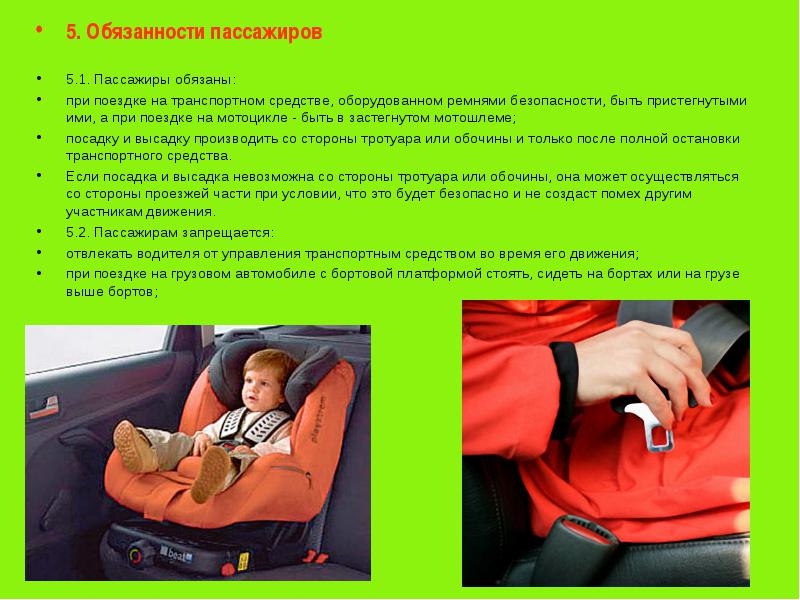
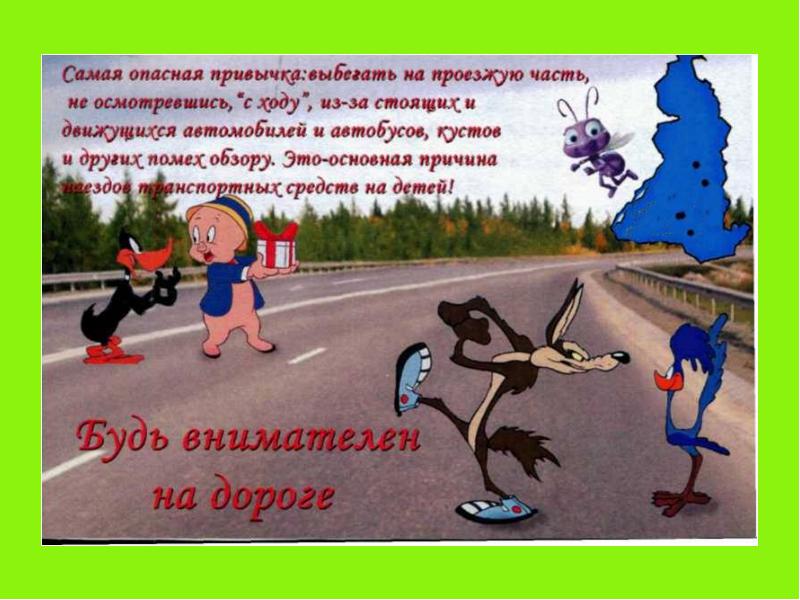
arrogance or frivolity inattention to others,
impoliteness,
lack of experience
disrespect for other people
negligence in the performance of their duties
and, finally, simply because of ignorance and violation of the “Rules of the Road”.
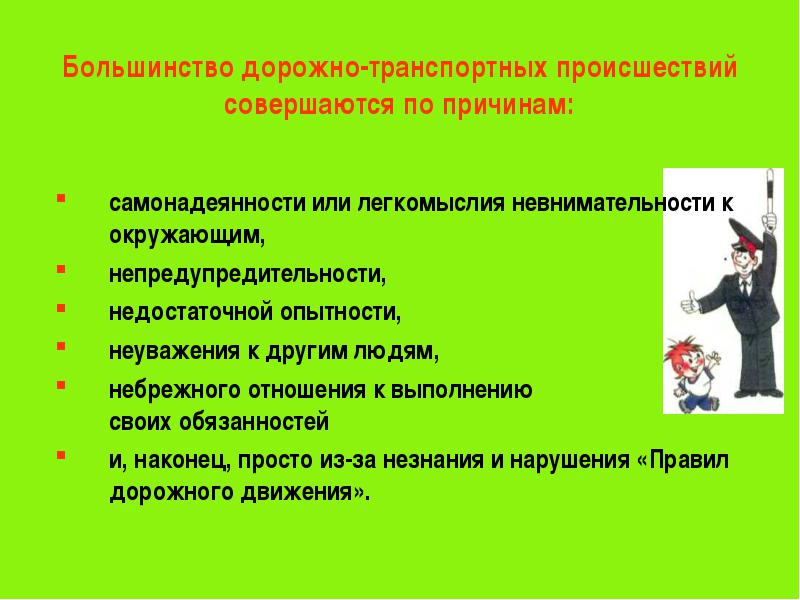
The most unpleasant hours for meeting pedestrians are from 12:00 to 20:00.
These hours account for about 80% of all wounded and 75% of those killed.
The largest number of collisions with pedestrians on suburban roads, as statistics show, occurs from 16:00 to 19:00 and from 0:00 to 05:00.

50% of all accidents happen to cars
25% of all accidents happen to trucks
10% of accidents happen to buses
5-7% of accidents happen to motorcycles.

12 thousand accidents,
12 thousand accidents,
557 children died
almost 12.5 thousand were injured children.

Most accidents involving children occur through the fault of adults who do not follow basic safety rules - grossly violate traffic rules, transport minors without special restraints and seat belts.
As a result, it turns out that children become hostages of adults, because of whose carelessness they die. .

Only in the first half
Only in the first half
2009 more than 5 thousand people
died and were injured in car accidents,
occurred on pedestrian
transitions.
And here the lion's share of responsibility
lies with the drivers, many of whom
forget about human priority
crossing the road and
knock down pedestrians
on the "zebra".
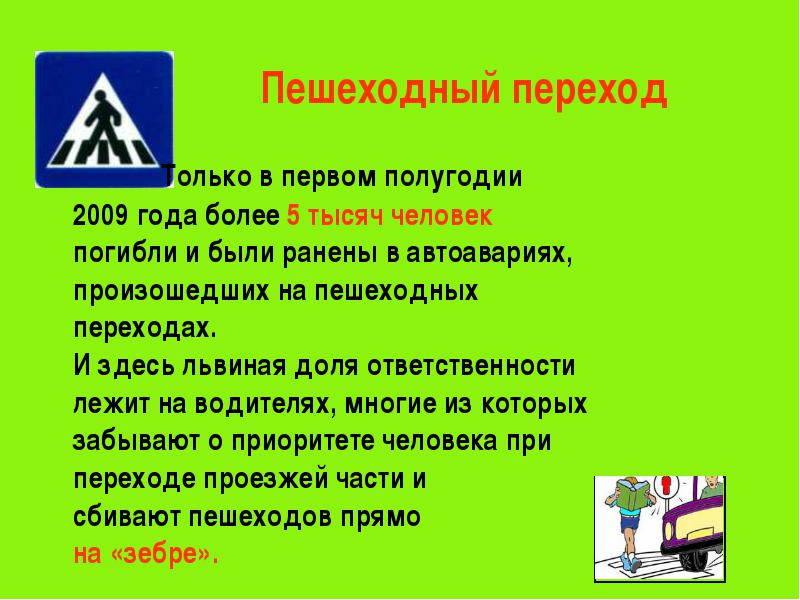
Most susceptible
road traffic injuries
children aged
from 7 to 14 years old,
i.e. school age.

Each road user:
should be aware of their responsibility for behavior on the road,
be more careful
strictly follow the rules
be polite and correct in relation to other drivers and pedestrians.

Olga Molodushkina
Summary of the lesson on traffic rules "Duties of pedestrians, passengers and drivers"
Target: prevention of childhood traumatism.
Tasks:
Get to know the rules pedestrians, passengers and drivers;
Promote the development of attention, observation;
Encourage children to follow the rules traffic.
Course progress.
Guys, hello! Today we will talk about how to behave on the street,
remember the rules of the road and play.
Let's remember what the abbreviation STSI stands for? (Children's answers).
State Road Safety Inspectorate.
And who are the main road users? ( pedestrians, drivers, passengers).
Traffic rules exist for drivers, pedestrians and passengers.
Now I want to introduce you to the « Responsibilities of a Pedestrian» .
The safest place to cross is with a traffic light. You can start crossing the street only when the traffic light is green. Red traffic light forbids traffic pedestrian and vehicle.
You only need to cross the road pedestrian crossings - "zebras" - or at intersections. Do not forget that you should go through the roadway strictly at a right angle, because this is the only way you can fully control the movement of cars.
In places where a “zebra” is applied or special signs are installed, a pedestrian gets an advantage over transport, but you need to start crossing the road only after you make sure that all the cars have stopped and let you through.
It is better to cross the roadway not one by one, but in a group of people. But here, too, carefully monitor the transport - among drivers may be undisciplined people.
Once out on the road, do not be distracted by conversations, do not use cell phone and don't play handheld electronic games.
Do not run and do not rush when crossing! Cross the street with a quick, confident step, do not stop and do not get distracted. NEVER run across the road in front of oncoming traffic.
Even on roads where vehicles rarely pass, in the courtyards of houses, you must always be careful and not forget about your safety.
You should only walk on sidewalks, keeping to the right side.
If there is no sidewalk, you can walk along the side of the road or along the edge of the carriageway, only necessarily TOGETHER to the movement of vehicles.
In winter, car windows are covered with frost and driver very difficult to follow the road. Crossing the street in front of a nearby car is always dangerous, and now even more so. The distance required to stop the vehicle on a slippery road increases. So that trouble does not happen to you, do not rush, wait until all the transport has passed. Don't forget that the movement pedestrian may be difficult due to ice on the roadway.
Daylight hours are short in winter, so your clothes should be bright. It is desirable that it has reflective elements.
Now let's play a little. The game "Signs of traffic rules"
1. Why can't you cross the road in front of a nearby vehicle?
2. How to bypass a standing bus, trolleybus?
3. At what age is it allowed to ride a bicycle on the streets and roads?
4. Why is it dangerous to play ball on the road?
5. What does a yellow traffic light mean?
6. How and where is it better to cross the street?
7. Why can't you cling to trucks?
9. Where should I expect a bus, trolleybus?
10. Where should you walk? pedestrians without a sidewalk?
11. What does a red traffic light mean?
Next memo « Obligations of Passengers» .
1. Expect public transport only at stops.
2. Before entering, let out those who get out of the transport.
3. When unregulated transition go around the streets in front of the tram, and the bus and trolleybus in the back
4. Behave in transport worthy:
Do not make noise and do not push;
Give way to the elderly and disabled, women with heavy bags;
Hold on to the handrails while the vehicle is in motion;
Do not forget to pay your fare or present your travel document;
Never try to get into a vehicle on the go (you can slip off the steps and get under the wheels of the bus);
Do not enter a crowded bus, trolleybus, tram;
Sharp and uncomfortable for others passengers Items should be well packaged and carefully placed so that they do not interfere with anyone.
Let's have a rest. The game "Complete the meaning".
1. Previously, bills and letters,
drawing, reading,
All the boys need to know
ABC (Movement)
2. Not alive, but walking,
Motionless - but leads. (Road.)
3. tall trees longer
Small blades of grass below.
With her, the distances get closer
And we open the world with her. (Road)
4. A thread stretches, winding among the fields,
Forest, copses
Without end and end.
Don't break it
Not to roll into a ball. (Road)
5. Going out
Prepare in advance
Politeness and restraint
And most importantly - (Attention)
6. The bus does not roll here.
Trams will not pass here.
It's calm here pedestrians
They walk along the street.
For cars and trams
There is another path. (Sidewalk)
7. Lyosha and Lyuba go in pairs.
Where are they going? By (sidewalk)
8. What are the names of those tracks
On which legs do they walk?
Learn to distinguish them accurately
Do not fly like a fire.
Footpaths -
This is just? (Sidewalk)
9. Well, what if pedestrian
Pavement out of the way?
If needed pedestrian
Cross the bridge?
Immediately looking for a pedestrian
Road sign...? (Transition)
10. If you are in a hurry on the way
Walk across the street
Go where all the people
Where the sign is... (Transition)
memo « Responsibilities of drivers» .
Driver vehicle must give way to pedestrians, crossing the carriageway, on an unregulated pedestrian crossing.
If before unregulated pedestrian the vehicle is stopped or slowed down by the crossing, drivers other vehicles moving in adjacent lanes may continue to move only after making sure that there is no pedestrians.
On regulated pedestrian crossings when the permissive traffic light signal is turned on driver should enable pedestrians complete the crossing of the carriageway in this direction.
It is forbidden to enter crosswalk, if a congestion has formed behind it, which will force driver to stop at a crosswalk.
Driver, remember! The road is a danger zone! Strictly follow the rules of the road. Violation of them can lead not only to the loss of the vehicle and your death, but also to mass death. passengers.
Remember! Transportation safety passengers depends, first of all, on how it is organized driver. Before the trip, you must instruct passengers on the procedure for getting on and off the vehicle, as well as on the rules for using emergency exits. Need to pay special attention passengers for that that standing while driving is prohibited. start moving the driver can only after making sure that the conditions of safe transportation passengers are provided.
Do not exceed the speed limit, do not operate a vehicle that is not working, do not overload the bus, and do not drive under the influence of alcohol or drugs.
All of the above violations of the Rules of the road can lead to a tragedy on the road. To avoid such cases, the State Traffic Safety Inspectorate warns all drivers involved in passenger traffic, follow the rules of the road! Who else but you should honor every letter "Law of the Roads". You have no right to be frivolous, because you are entrusted with the most sacred thing - human life!
Let's play last "Yes and no"
Are you crossing the road at a red light? (Not)
Do you ride a scooter in the yard? (Yes)
They say you don't give up your seat to the elders in transport. This is true? (Not)
Is it true that you cross the road on a green light? (Yes)
Do you play on the road? (Not)
Is it true that you boldly cross the road at the yellow traffic light? (Not)
Do I have to wait for the bus bus stop? (Yes)
Are there children in this hall who can ride on transport by clinging to it? (Not)
And will it be right if the sign is canceled « Crosswalk» ? (Not)
So is it necessary to follow the rules of the road? (Yes)
Goodbye!
Let's immediately prioritize: a road user can only be individual, human. Do not be confused: a vehicle cannot be a participant. Only a person is able to have rights and bear obligations within the framework of the rules governing traffic.
Definition from the SDA (clause 1.2):
"Road user" - a person who is directly involved in the process of movement as a driver, pedestrian, passenger of a vehicle.
AT this definition a complete, exhaustive list of persons who may participate in road traffic is given.
In other words, each of us within the framework of traffic can be either a driver, or a passenger, or a pedestrian.
Driver
The most important, the main participant in the movement is the driver. It is he who bears the main burden of responsibility for compliance with traffic rules and road safety. Therefore, those who believe that the Rules exist as an advantage for the driver are practically not mistaken.
Definition from the SDA (clause 1.2):
"Driver" - a person driving a vehicle, a driver leading pack animals, riding animals or a herd along the road. A driving instructor is equivalent to a driver.
The driver thus appears to us in his three main manifestations.
1. Vehicle driver.
This is the classic and most common case. A person driving any vehicle (bicycle, moped, motorcycle, car, etc.) is considered a driver.
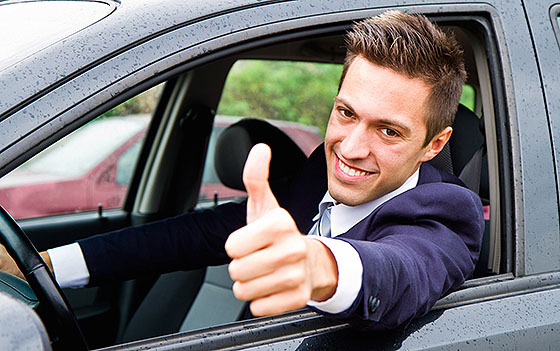
The lion's share of traffic rules regulates the activities of the driver of the vehicle. It was for him that a special section 2 of the traffic rules was created, which is called so - “ General Responsibilities driver."
By the way, the question of the status of the driver is still being discussed. Is he such if he parks the car and goes about his business?

It seems to us that it is. This, of course, is not certain. But otherwise, why and for what he is fined in case of violation of the rules of stopping or parking? A person does not control his vehicle, how is the definition voiced?

Therefore, it seems to us that one should not cling to the letter of the law - the "person who manages" the vehicle. Otherwise, after being stopped by a traffic police officer, this very “person”, having left the vehicle, ceases to control it and may formally refuse to submit documents to the inspector. After all, it (“the person”) is no longer the “person managing” the vehicle?
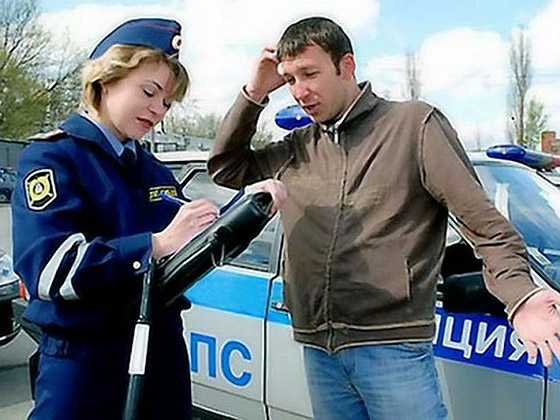
Before us is a typical example of a gap in the law. And such examples in the text of traffic rules great amount. Therefore, we propose to call on common sense for help in such legal conflicts.
2. Animal driver.
This is the second manifestation of the driver's essence. Pack or riding animals, as well as a herd moving along the road, must be accompanied by a driver. It is the driver - a shepherd, a shepherd, etc.

It is such a driver who is responsible for traffic safety and is responsible at the moment when his “wards” cross the carriageway or move along the road.
3. Driver - driving instructor.
When teaching driving, we may, at first glance, encounter a paradox: a cadet is driving, but he is not a driver!
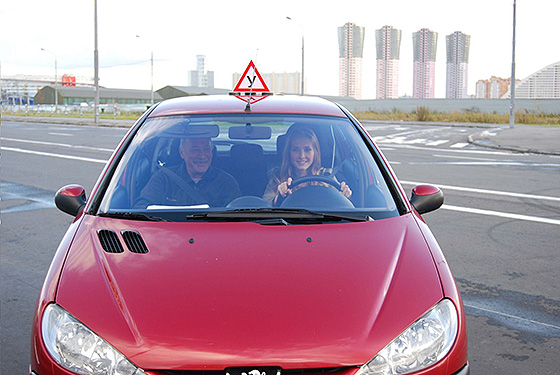
And nothing surprising. According to the traffic rules, the instructor is the driver, who is responsible for traffic safety and strict observance by the cadet of traffic rules. And, unfortunately, for the violations committed by his ward.
Passenger
The vehicle, as we found out earlier, exists to transport passengers and various items (cargo, equipment). Let's focus on the passenger - another road user. His behavior is regulated by the 5th section of the SDA.
Definition from the SDA (clause 1.2):
"Passenger" - a person, other than the driver, who is in (on) a vehicle, as well as a person who enters (gets on) the vehicle or leaves the vehicle (gets off it).
One thing is clear from all this tirade: a passenger is considered to be such as long as he is in the vehicle. However, he is not a driver.

Many ignorant passengers believe that they cannot be subjected to legal liability for violating traffic rules. This is mistake. For example, refusal to use a seat belt (if any in the vehicle) is the basis for the administrative responsibility of the passenger.
A pedestrian
The problem of a pedestrian is the most burning, the most relevant in practice road safety. Pedestrian collisions (regardless of where they occur - at a pedestrian crossing or outside it) are a very common occurrence.

Pedestrians themselves are partly to blame for this state of affairs, completely ignoring the norms of the 4th section of the Rules, which speak of the duties of pedestrians. The most popular misconception is blind faith in the unconditional correctness of a pedestrian at a pedestrian crossing. This conviction is deliberately and purposefully cultivated by the media, the Internet, regardless of the existing obligations of a pedestrian, recorded in the traffic rules.
Definition from the SDA (clause 1.2):
"Pedestrian" - a person who is outside the vehicle on the road or on a pedestrian or bicycle path and does not work on them. Persons moving in wheelchairs without an engine, driving a bicycle, moped, motorcycle, carrying a sledge, cart, baby or wheelchair, as well as using roller skates, scooters and other similar means for movement are equated to pedestrians.
Pedestrian is the most massive road user. And therefore a clear definition and clarification of its status is a matter of principle.
1. A pedestrian must indicate the fact of his presence on the road (sidewalk, carriageway, roadside, etc.), as well as on the pedestrian (or bicycle) path.

In other words, if a person is not in these areas, then he will not be considered a pedestrian.
2. Pedestrians include a number of persons who move small vehicles without their direct use, as well as those moving on wheelchair without engine.

For example, pedestrians can drive a motorcycle, moped, bicycle, as well as move a baby carriage, sled, cart, etc.


4. Persons performing their work functions, professional duties within the road will not be considered pedestrians.
These most often include:

b) traffic police officers.
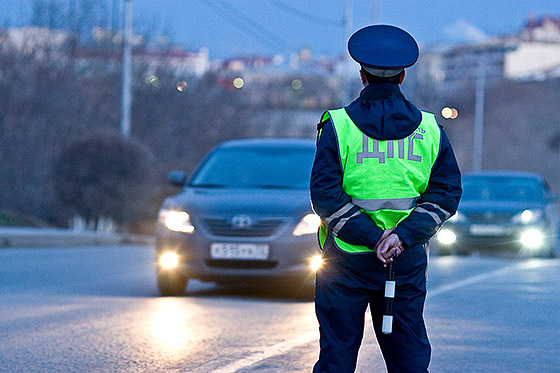
Thus, we call a pedestrian a road user who is within the road, pedestrian, cycle path and uses them specifically for movement without using a vehicle, and not for performing their professional functions.
Adjuster
The traffic controller is not a road user. No matter how paradoxical it may seem, it is a fact. A traffic controller is a person whose professional duties include traffic control. It turns out that this is a kind of professional status, designed to monitor safety on the road.
Definition from the SDA (clause 1.2):
"Regulator" - a person endowed in the prescribed manner with the authority to regulate traffic using the signals established by the Rules, and directly exercising the specified regulation. The traffic controller must be in uniform and (or) have a distinctive badge and equipment. Regulators include employees of the police and military automobile inspection, as well as employees of road maintenance services, on duty at railway crossings and ferry crossings in the performance of their duties.
Speaking of traffic controllers, we most often mean the traffic police inspector -. In principle, in the vast majority of cases it is so.
It is not difficult to determine the traffic controller: according to the traffic rules, he must be in special uniform.

Its equipment also includes means of regulation - a rod, a disk with a red retroreflective element, a whistle (to attract the attention of traffic participants) or a loudspeaker.

The traffic controller must have a certificate, which he must present at the request of the driver. There is one more requirement for the traffic police inspector: a special distinctive sign with a personal number must be on his chest.

In addition to traffic police officers, other officials are equated to traffic controllers, whom the Rules give authority to regulate traffic.
1. Traffic controllers - employees of the VAI (military automobile inspection).

When moving along the roads of military convoys, the employees of the VAI exercise control over traffic safety. Traffic control aims at the unhindered passage, above all, of vehicles of the armed forces. And under these conditions, ordinary drivers are obliged to comply with the requirements of such traffic controllers.
2. Regulators - on duty at the crossing.
For a clear organization of traffic and ensuring maximum safety of the passage of vehicles through the railway tracks at the busiest railway crossings, special officials are involved - duty officers for the crossing. At such controlled crossings, duty officers work around the clock.
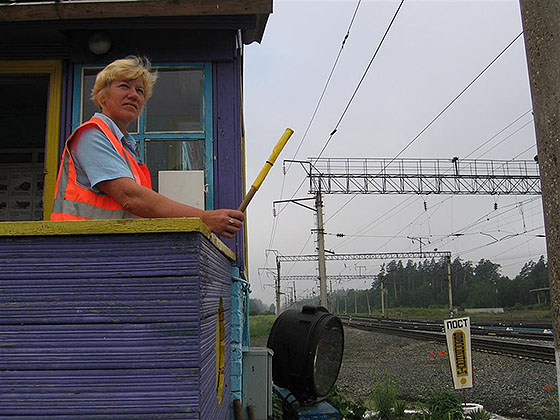
This practice leads to increased security. In case of failure of the automatic signaling at the crossing, the traffic controller (crossing duty officer) blocks the exit of vehicles onto the railway tracks.

3. Regulators - employees of road maintenance services.
- Burns, Robert - short biography
- The concept of common vocabulary and vocabulary of limited use
- Nancy Drew: The Captive Curse Walkthrough Nancy Drew Curse of Blackmoore Manor Walkthrough
- Deadpool - Troubleshooting
- Won't start How to Survive?
- What to do if bioshock infinite won't start
- Walkthrough Nancy Drew: Alibi in Ashes
- Spec Ops: The Line - game review, review Spec ops the line crashes on missions
- Room escape level 1 walkthrough
- Processing tomatoes with boric acid How much will 2 grams of boric acid
- Cucumber Grass (Borago)
- Bioinsecticide Lepidocid: purpose, properties and application procedure Lepidocide waiting period
- How to change the language to Russian in steam
- Dendrobium noble: room care
- Morphology of plants general concepts - document
- Planting, propagation and care of bamboo at home, photo Growing bamboo from seeds
- How to strengthen the cellular signal for the Internet in the country
- Sanskrit reveals the forgotten meaning of Russian words (2 photos)
- The oldest language Sanskrit programming language of the future Dead language Sanskrit
- Who has dominion over all the earth?









